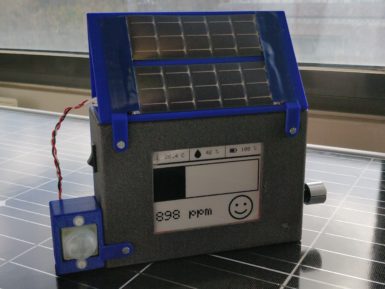
Overview
The Portenta Machine Control is a fully-centralized, low-power, industrial control unit able to drive equipment and machinery. It can be programmed using the Arduino framework or other embedded development platforms.
Thanks to its computing power, the Portenta Machine Control enables a wide range of predictive maintenance and AI use cases. It enables the collection of real-time data from the factory floor and supports the remote control of equipment, even from the cloud, when desired.
Key benefits include:
-
Shorter Time-To-Market
-
Give new life to existing products
-
Add connectivity for monitoring and control
-
Tailor it to your need, each I/O pin can be configured
-
Make equipment smarter to be ready for the AI revolution
-
Provide security and robustness from the ground up
-
Open new business model opportunity (e.g. servitization)
-
Interact with your equipment with advanced HMI
-
Modular Design for adaptation & upgrades
The Portenta Machine Control allows companies to enable new business-as-a-service models by monitoring customer usage of equipment for predictive maintenance and providing valuable production data.
The Portenta Machine Control enables industry standard soft-PLC control and is able to connect to a range of external sensors and actuators with isolated digital I/O, 4-20mA compatible analog I/O, 3 configurable temperature channels, and a dedicated I2C connector. Multiple choices are available for network connectivity, including USB, Ethernet, and WiFi/Bluetooth® Low Energy in addition to industry specific protocols such as RS485. All I/O are protected by resettable fuses and onboard power management has been engineered to ensure maximum reliability in harsh environments.
The Portenta Machine Control core runs a Portenta H7 microcontroller board (included), a highly reliable design operating at industrial temperature ranges (-40 °C to +85 °C) with a dual-core architecture that doesn’t require any external cooling. The main processor offers the possibility of connecting external Human Machine Interfaces like displays, touch panels, keyboards, joysticks, and mice to enable on-site reconfiguration of state machines and direct manipulation of processes.
The Portenta Machine Control’s design addresses a large variety of use scenarios. It is possible to configure a selection of the I/O pins via software. The Portenta Machine Control stands out as a powerful computer to unify and optimize production where one single type of hardware can serve all of your needs. Among other outstanding features are the following:
-
Industrial performance leveraging the power of Portenta boards
-
DIN bar compatible housing
-
Push-in terminals for fast connection
-
Compact device (170 x 90x 50 mm)
-
Reliable design, operating at industrial temperature rates (-40 °C to +85 °C) with a dual-core architecture that doesn’t require any external cooling
-
Embedded RTC (Real Time Clock) to ensure perfect synchronization of processes
-
Leverage the embedded connectivity without any external parts
-
CE, FCC, and RoHS certified
The Portenta Machine Control can be used in multiple industries, across a wide range of machine types, including: labelling machine, form & seal machine, cartoning machine, gluing machine, electric oven, industrial washer & dryers, mixers, etc.
Add the Portenta Machine Control to your existing processes effortlessly and become the owner of your solutions in the market of machines.
Tech specs
|
Processor |
STM32H747XI dual Cortex®-M7+M4 32 bit low power Arm® MCU (Portenta H7) |
|
Input |
|
|
Output |
|
|
Other I/O |
|
|
Communication Protocols |
|
|
Connectivity |
|
|
Memory |
|
|
Dimensions |
170 x 90 x 50 mm |
|
Weight |
186 gr |
|
Power |
24V DC +/- 20% |
|
Connector Type |
Push-in terminals for fast connection |
|
Operating Temperature |
-40° C to +85° C (-40° F to 185°F) |
Conformities
Resources for Safety and Products
Manufacturer Information
The production information includes the address and related details of the product manufacturer.
Arduino S.r.l.
Via Andrea Appiani, 25
Monza, MB, IT, 20900
https://www.arduino.cc/
Responsible Person in the EU
An EU-based economic operator who ensures the product's compliance with the required regulations.
Arduino S.r.l.
Via Andrea Appiani, 25
Monza, MB, IT, 20900
Phone: +39 0113157477
Email: support@arduino.cc
Documentation
Study how the Portenta Machine Control works using following files:
Portenta Machine Control schematics
SCHEMATICS IN .PDFPINOUT IN .PDFDATASHEET IN .PDF
Portenta H7 schematics
Learn more
Get Inspired

Just a simple and enjoyable autonomous greenhouse

Humans are animals and like all animals, we evolved in mostly outdoor conditions where the air is nice and fresh. But modern society keeps most of us indoors the vast majority of the time, which could have negative health effects. There are many potential hazards, including a lack of sunlight and psychological effects, but CO2 may pose a more tangible risk. To keep tabs on that risk within classrooms, a team from Polytech Sorbonne built this small CO2 monitor. This CO2 monitor performs two functions: it shows anyone nearby the CO2 levels in the area and it uploads that data over LoRaWAN to a central hub that can track the levels across many locations. A school could, for example, put one of these CO2 monitors in every classroom. An administrator could then see the CO2 levels in every room in real time, along with historical records. That would alert them to immediate dangers and to long term trends. At the heart of this CO2 monitor is an Arduino MKR WAN 1310 development board, which has built-in LoRa® connectivity. It uses a Seeed Studio Grove CO2, temperature, and humidity sensor to monitor local conditions. To keep power consumption to a minimum, the data displays on an e-ink screen and an Adafruit TPL5110 timer only wakes the device up every ten minutes for an update. Power comes from a lithium-ion battery pack, with a DFRobot solar charger topping up the juice. It uploads data through The Things Network to a PlatformIO web interface. An Edge Impulse machine learning model detects anomalies, so it can sound a warning even if nobody is watching. The enclosure is 3D-printable.











